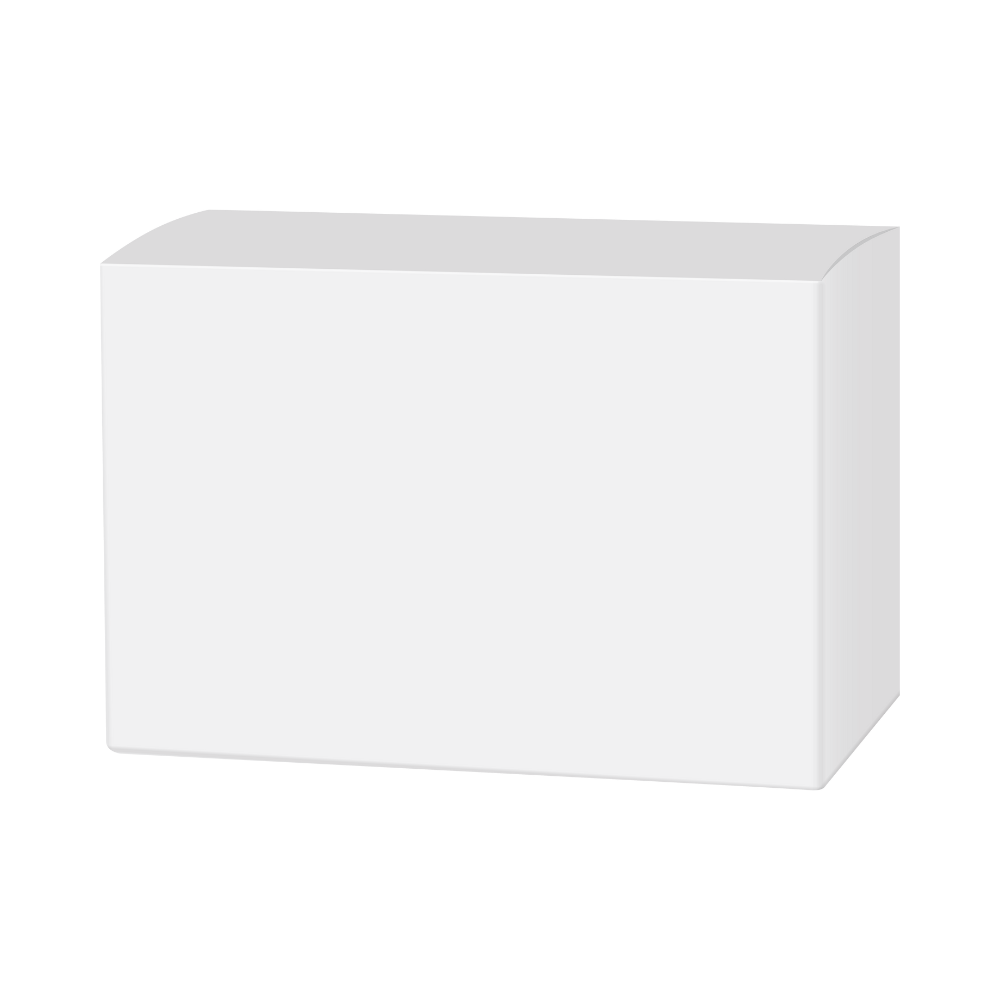Capitainer®SEP10
The Revolution has Started
Capitainer®SEP10 is developed for collection of blood where the cells are separated from the blood at the site of collection without centrifugation. The cell separated blood matrix is metered to an exact volume and dried for best shipping stability in ambient temperature.
Capitainer®SEP10 generates a plasma-like sample ideal for testing of substances that cannot be measured from a whole blood sample.
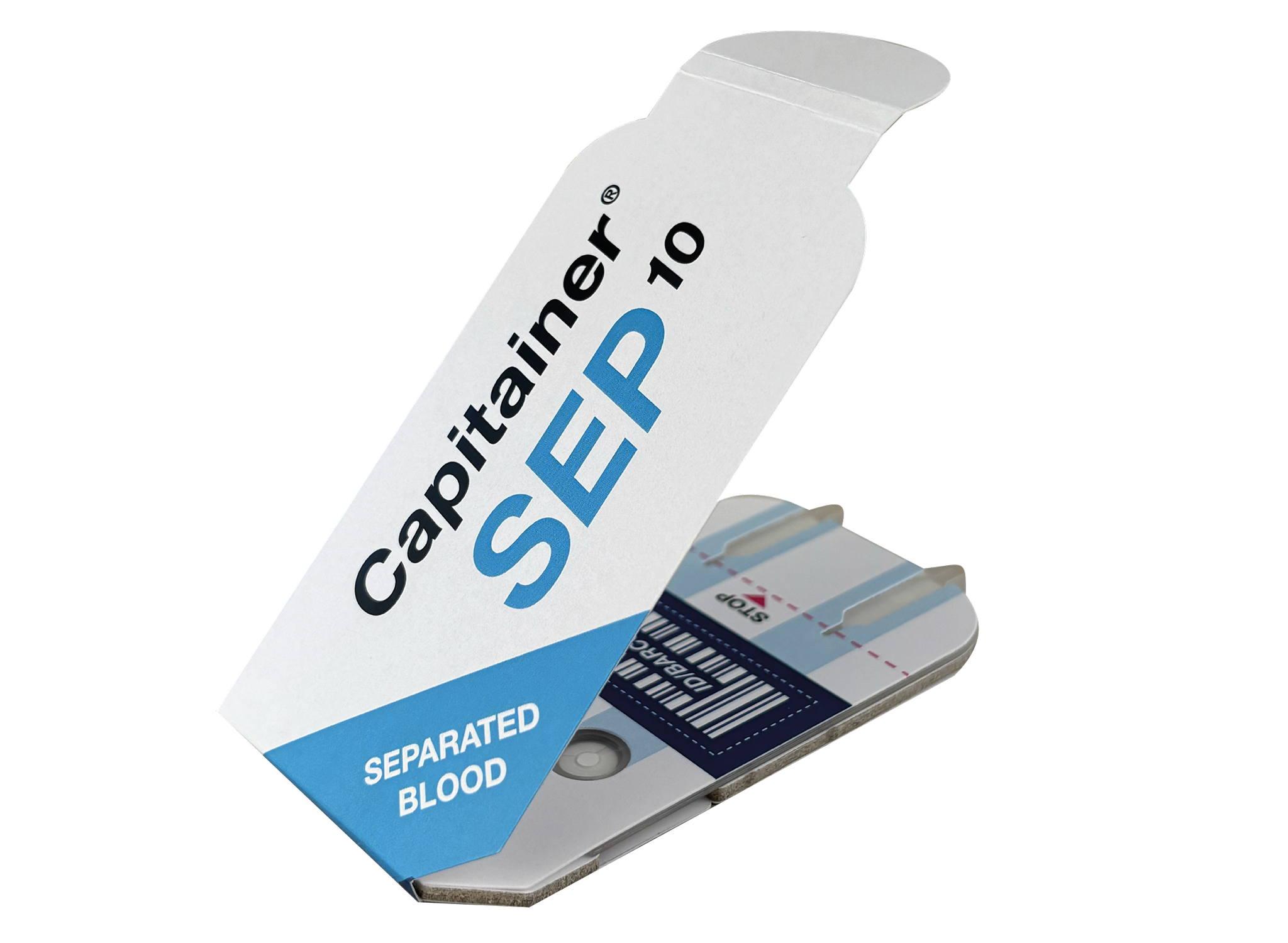
Capitainer®SEP10
Sampling with Capitainer® SEP10
Generating separated blood is simple! Just apply blood to the device, and our state-of-the-art technology will automatically handle the rest. Say goodbye to the need for time consuming phlebotomy. Conveniently ship at ambient temperature.
Check the instructions to see how easy sampling can be.
Design
Designed for Ease – Built for Performance
A few drops of blood are added to the inlets of the card up until the stop line. The blood is transferred to the extraction chamber where blood cells are separated from the liquid through a membrane. After filling of the metering channel, a pinch off mechanism is initiated which separates an exact volume of plasma-like from surplus liquids. The separated blood is transferred into a sample disc.
For the Lab
There are some aspects to consider when you perform validation tests in the laboratory:
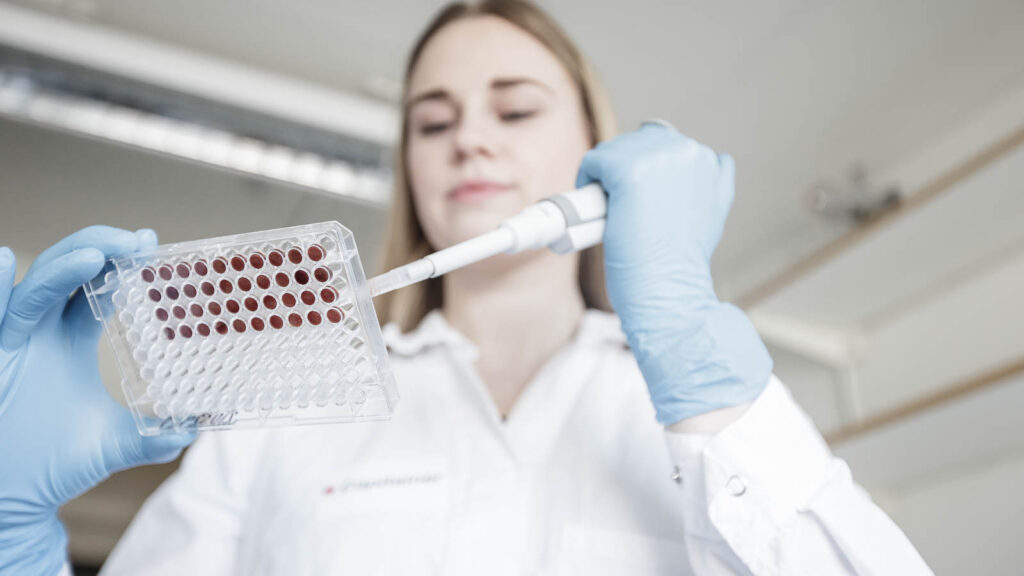

Application of Collected Blood
When using anticoagulated blood samples, i.e., blood samples to which an anticoagulant has been added, specific handling procedures must be followed. This is crucial because anticoagulants can affect the wetting properties of the blood in the microfluidic system and impact the device’s volumetric accuracy.
Do not use blood that has been stored for more than three days in a refrigerator. Before use, let the blood equilibrate to room temperature and ensure that it is well mixed by inverting the tube gently a few times.
After the application of anticoagulated whole blood, the Capitainer®SEP10 card must be allowed to dry in a standing position with the inlets facing downwards. While Capitainer provides a specialized drying rack for this purpose, any support that maintains a 90-degree angle may be used.
Important Notes About Timing:
You must monitor the sampling card closely after blood application. Place the card in the drying rack or chosen support within one minute after both sampling indicators turn blue. Note that the timing of the colorimetric sampling indicator varies according to blood hematocrit (HCT) content. On average, the sampling indicators turn blue within 3-4 minutes when using blood at 35% HCT and within 5-6 minutes when using blood at HCT 55%.
Step by Step Usage Instructions:
For successful application of anticoagulated fresh blood using a pipette, follow the steps listed below:
1. Place the Capitainer®SEP10 cards to be used on an elevated surface, e.g., a petri dish or similar.
2. Draw 60 µl of whole blood into a pipette tip.
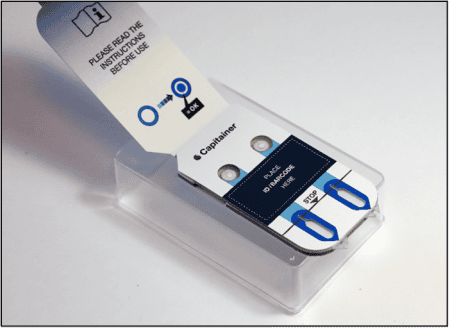
3. Push out a hanging drop of blood from the tip and gently touch the inlet of the Capitainer®SEP10 card with it. The drop will then be absorbed into the channel. (Image 1)
4. Continue feeding the channel with blood drops until the red stop line is reached. (Image 2)
5. Fill the second channel similarly without delay. (Image 3)
6. If blood flow stalls in the channel, tilt the card 90 degrees for 2 seconds, and then lay down flat again.
Open this this link for a live pipetting video.
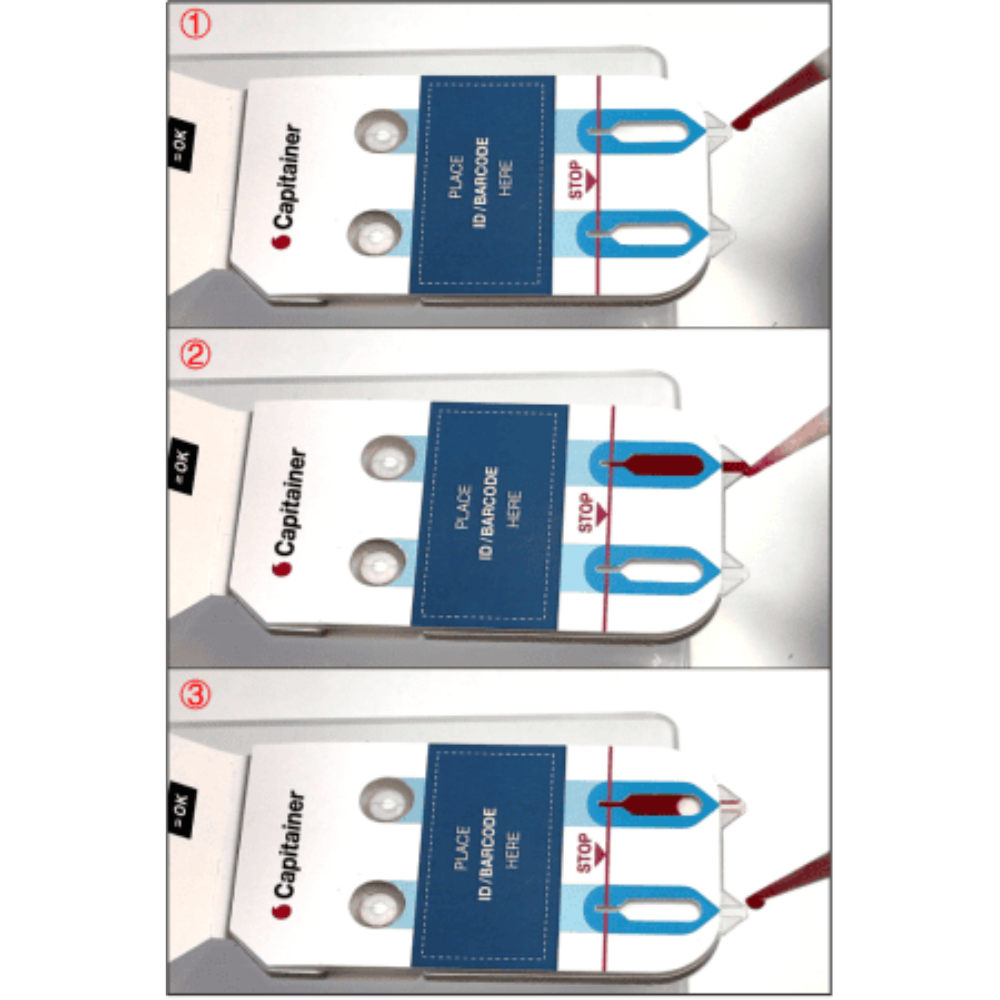
7. Proceed to fill the reminder of the cards in the same manner.
8. The sampling indicators will start exhibiting blue color after about 3-6 minutes depending on hematocrit of the blood.
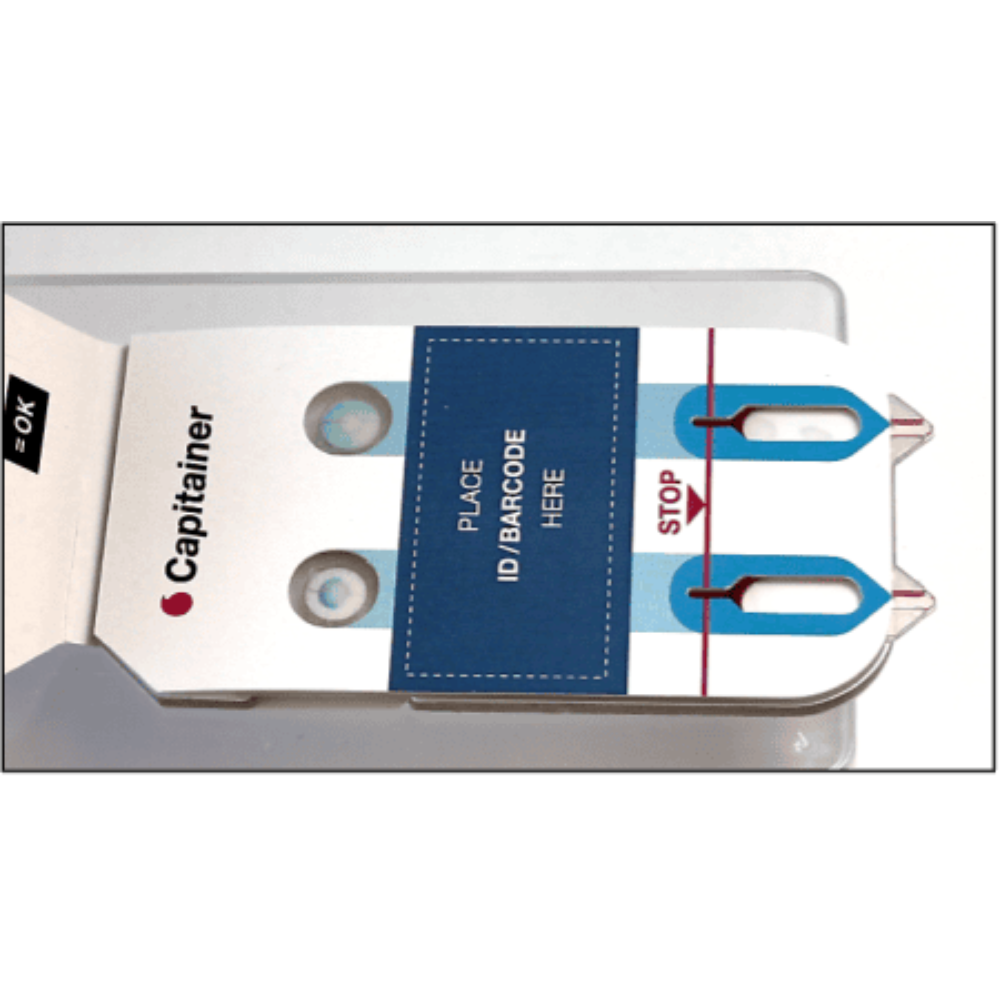
9. Once both indicators shows blue color on a card, place the card inlet-side down in a drying rack.
Note that it is crucial to place each card in a drying rack or chosen support within one minute after both sampling indicators shows blue color.
10. Continue placing the cards, one at a time, in the drying rack when both colorimetric indicators have turned blue.
11. Leave the cards to dry overnight at room temperature.

Pre-Analytical Card Handling
The first step is to transfer the dried sample from the card into a tube or plate for elution or extraction.
This step can be performed manually or automated. Check the option at our Lab Solutions page.
Sample disc transfer
1. Rip off the paper cover as illustrated to expose the sample discs.
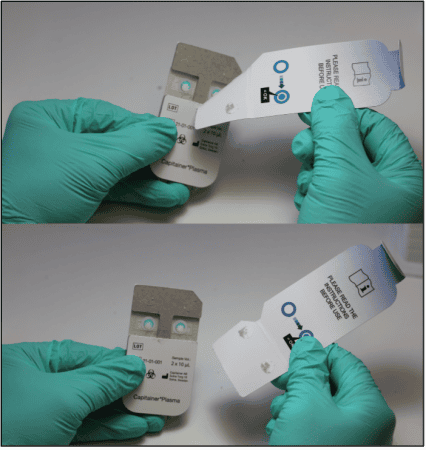
2. Use a pair of tweezers with flat tips (preferably Capitainer sample disc tweezer) to remove the outlet discs in the order as demonstrated here. Insert the tweezer tip beneath the disc with an angle, and lift the disc. Check to make sure that most of the paper material is removed
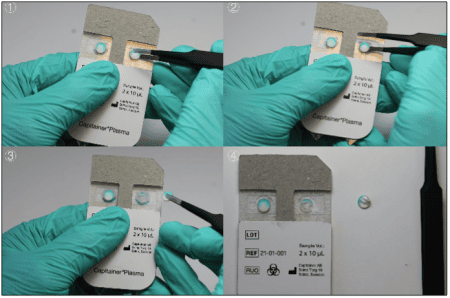
3. Make sure that the tweezer tip forms an around 30°angle with the sample disc to make sure the removal of the glass fiber disc as well.
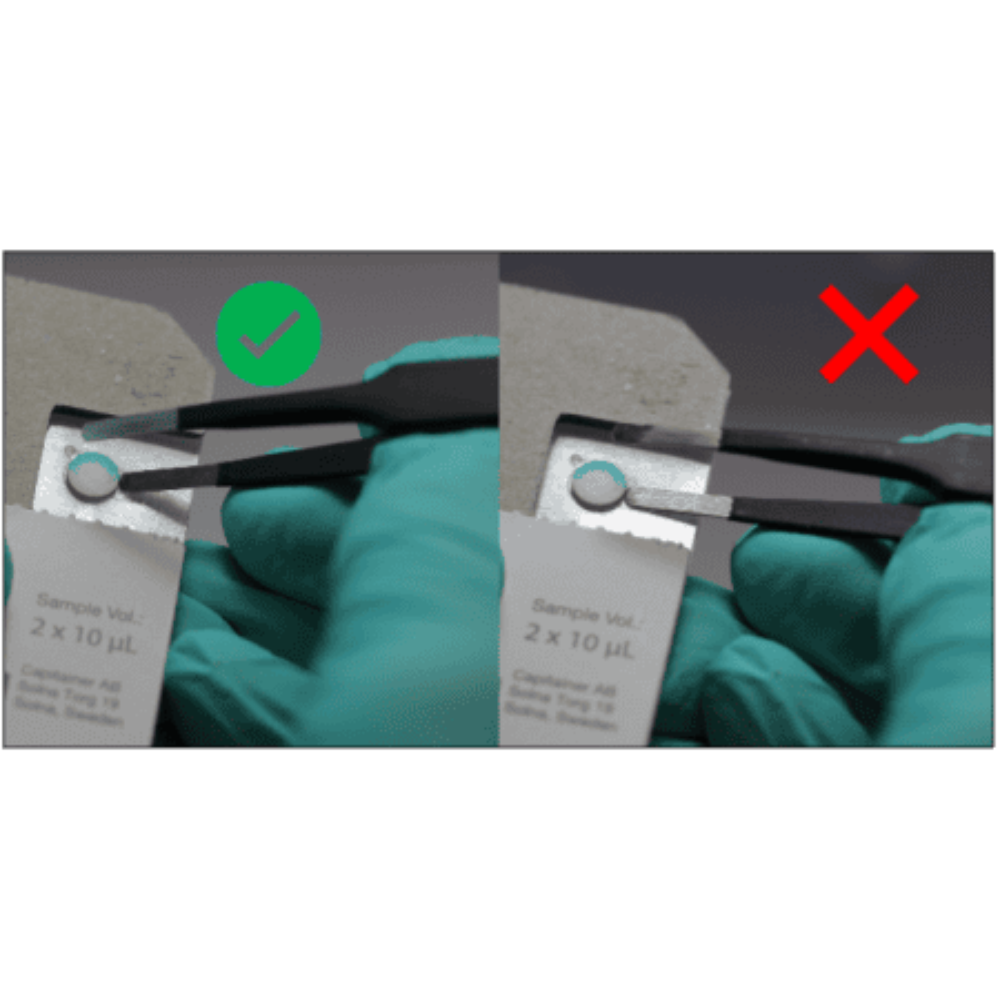
4. Check the quality of disc removal. With a good complete removal, both the paper disc and glass fiber disc should be taken off, leaving little residues on the adhesive surface and a very clean center (B). On the contrary, an incomplete removal is visualized by substantial paper resides on the adhesive surface and the glass fiber remains in the center (A). In this case, a second removal with the tweezer needs to be conducted to take off the glass fiber disc. Incomplete sample disc removal can affect the volume precision of the sample. Capitainer card handler PH96 ensures complete and quality assured handling
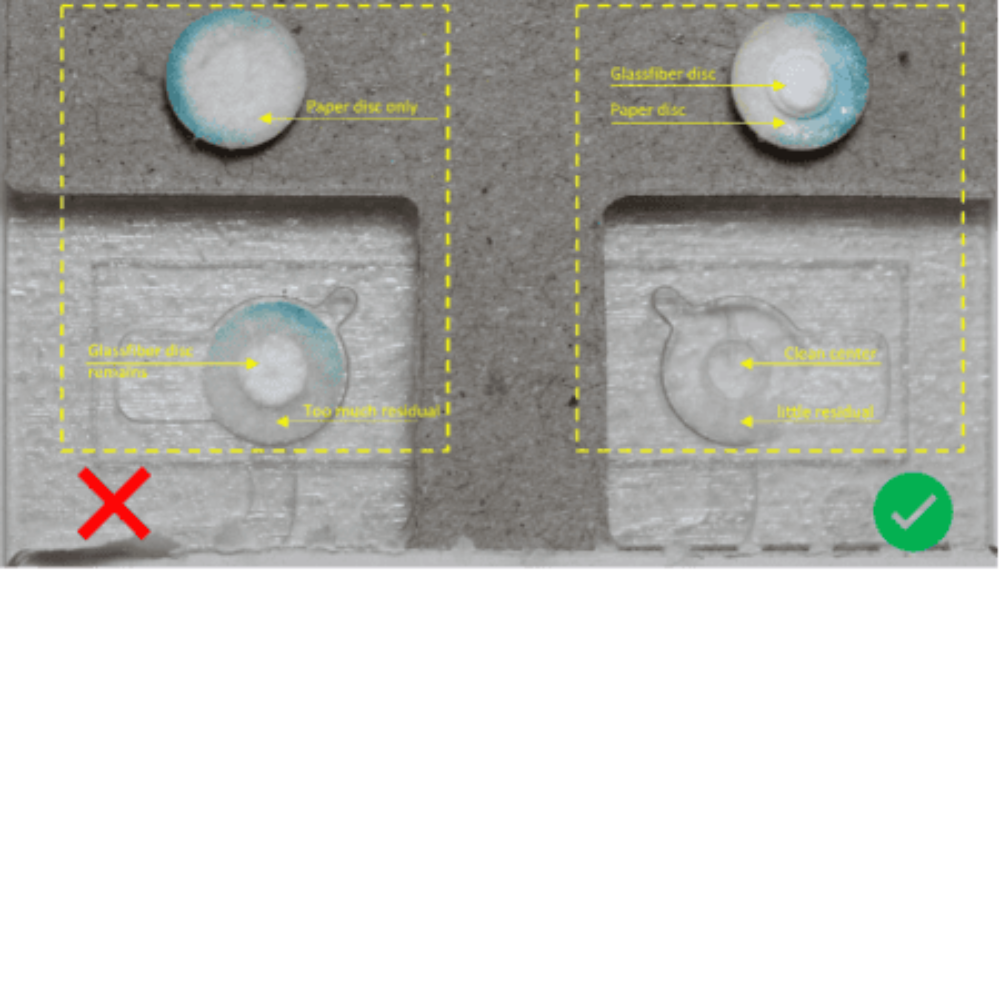
Technical Specifications
Accuracy
Reproducibility:
Standard deviation less than 0.98 μl (CV < 2%).
Outliers:
Probability of overfilling or underfilling (deviation> 3 SD) < 1%.
Risk of no sample: < 1%.
Product performance
The product generates 2 x 10µl of plasma/serum-like dried sample from 2 x 70µl whole blood with a precision < 3% volume CV from whole blood in the range of 35-55% HCT.
Product storage and handling
Storage conditions before use: Temperature; 15°C to 28°C, relative humidity; 10% to 99%. Avoid direct sunlight and moisture.
Unopened devices can be stored under the above-mentioned conditions until the expiry date printed on the device packaging.
Regulatory Notice
Capitainer®SEP10 is a CE-IVDR product registered according to the IVD Regulation (EU) 2017/746. The product is registered with FDA as a Device Class 1. In other regions, where above registrations does not apply, the device is supplied as a research use only (RUO) product for research and non-diagnostic activities. Test providers are responsible for validating the assay results from Capitainer® products.
Responsible Manufacturer
CAPITAINER AB
Solna Torg 19
SE-171 45 Solna
Sweden
Order Capitainer®SEP10 Now
